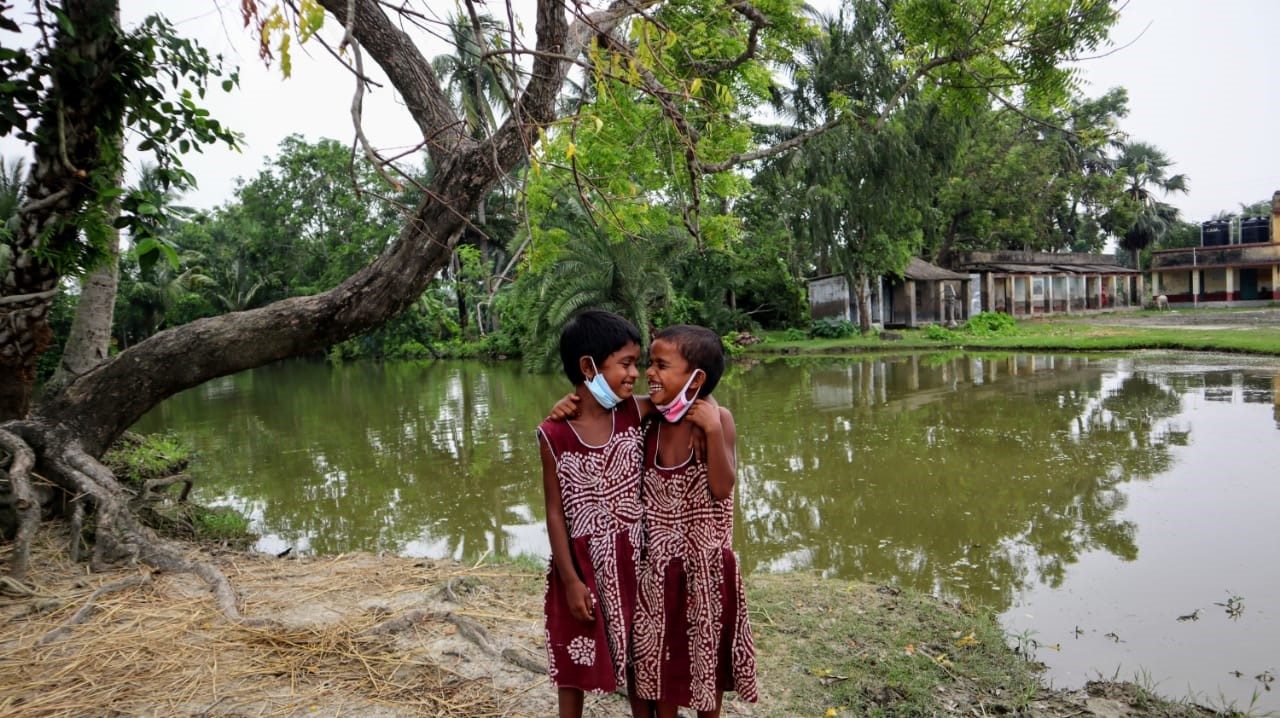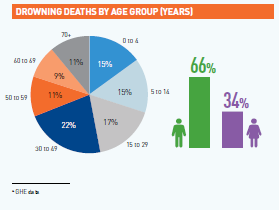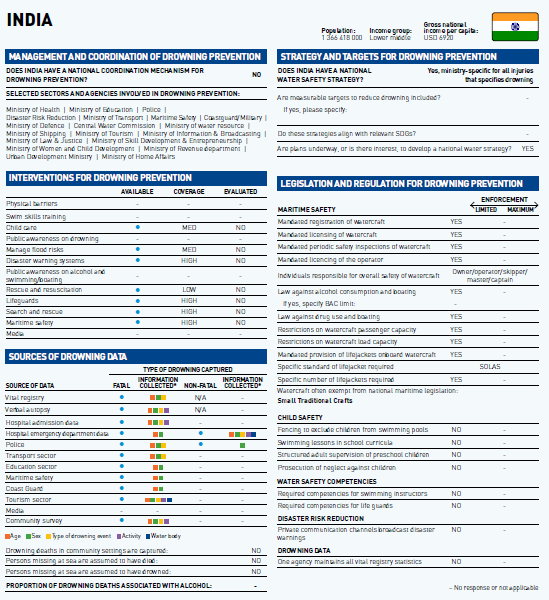NEW DELHI, JULY 23 Drowning is a significant issue globally, accounting for 7% of all injury-related deaths and is among the top 10 leading causes of death for 5-14 year olds. The World Health Organization (WHO) estimates that there are 236,000 drowning deaths worldwide each year, of which more than 60% occur in South-East Asia and the Western Pacific Region.
As the world observes the inaugural world drowning prevention day on July 25 2021, the George Institute for Global Health in India along with its partners call for a national water safety plan. Drowning has emerged as the second largest cause of deaths in India due to injury, with nearly 62000 drowning deaths each year. Children under the age of 14 years are at the highest risk with 30% of all drowning deaths reported are of children.
"There is no central mechanism to capture drowning related data and there is a gross underreporting. Further gains made in reducing infectious child deaths cannot be lost to drownings, one of the leading causes of death across basin of Bengal. Interventions for safe places for pre-school children with structured supervision has a huge potential in reducing drownings, injuries and improving child development." said Dr. Jagnoor Jagnoor co -director WHO Collaborating Centre on Injury Prevention and Trauma Care and Head, Injury, The George Institute, India.
A key highlight of The George Institute's work in India has been galvanising communities at the centre of drowning risk mitigation in the Sundarbans. A 2020 community-based survey conducted by The George Institute in collaboration with the Child in Need Institute (CINI) in the Sundarbans region of West Bengal, India, reported that there are nearly 3 drowning deaths among 1-9 year old children each day.
A rural, forested region, Sundarbans' children are exposed to a high risk of drowning due to the waterlogged geography. The Ganges delta region (in which the Sundarbans is located), also experiences frequent flooding of major rivers due to heavy monsoon rain during April-September. The survey findings shed light on the burden among this population, as well as highlighted the need for more accurate and effective data collection on drowning deaths, harnessing community knowledge and community-based surveys, a validated method transferrable to other rural low- and middle-income country contexts.
"Meaningful involvement of communities in decision-making should be the cornerstone of regional drowning prevention plans." said Chhavi Bhandari, Head of Advocacy and Policy Engagement at The George Institute India.
"Governments are called on to engage the voices of children and to support opportunities for communities in shaping services and policies which will create a virtuous cycle of more effective people-centred responses and improved community resilience", she added
For example, in Sundarbans, our partner CINI took a children's human rights perspective and organised several child parliaments to promote decision-making processes that are more collaborative and inclusive for children. We created an enabling environment for these children to voice their ideas, thoughts, and feelings. Unsurprisingly, an impressive number of bright and inspiring children are interested in influencing decisions that affect their lives. Their ideas ranged from obvious to simple to innovative solutions to tackle the drowning problem in the region. Some examples include younger children wearing squeaky shoes when they are playing to make supervision easy, removing all attractive things from around the ponds and teaching swimming and rescue techniques to all adults in the community. We have gathered their views and drafted the Child Declaration to reflect their hopes and dreams for a safe community and ending the silent epidemic of drowning.
 -
-

Marking World Drowning Prevention Day 2021 in West Bengal, India [Credit: Sujoy Roy]
India is a country with diverse geographies and the context of drowning range from child drowning in natural ponds in rural areas, to coastal, river and disaster related drownings. While some states like Assam have come up with a detailed notification regarding drowning prevention plan through the State disaster management authority, there is a need for a national drowning prevention plan, said Dr. Jagnoor Jagnoor. Maharashtra too has put in a place a mechanism to prevent drowning at the beaches during monsoon, which is welcome, she added. There is a need for legislation related to water safety to be strengthened across states in India.
WHO drowning status report highlights the need for multi-sectoral action, identifying 20 Ministries that contribute to drowning prevention activities. These include Ministry of Health, Ministry of Education, Disaster Risk Reduction, Ministry of Transport, Maritime Safety, Coastguard/Military, Central Water Commission, Ministry of Shipping, Ministry of Tourism, Ministry of Information & Broadcasting, Ministry of Law & Justice, Ministry of Skill Development & Entrepreneurship, Ministry of Women and Child Development, Ministry of Revenue department, Urban Development and Ministry of Home Affairs.
Some of the positive aspects of drowning prevention activities in India, highlighted by the WHO South East Asia Status report on drowning prevention includes:
- The use of lifeguards at public swimming venues covering more than 75% of the population
- Evaluated intervention to build resilience and manage flood risks and other hazards locally and nationally covering more of half of India's population
- Interventions for safe places for pre-school children with capable childcare that cover 25-49% of the Indian population
- Minimum competencies for Swimming Instructors and Lifeguards is available.
A 2019 community-based survey of 860 000 population in the Sundarbans region of West Bengal, India, reported that there are nearly 3 drowning deaths among children aged 1-9 each day. The survey was conducted by The George Institute in collaboration with the Child in Need Institute (CINI).
Living in a rural, forested region, children in the Sundarbans are exposed to a high risk of drowning due to the waterlogged, low-lying geography of the local environment. The Ganges delta region (in which the Sundarbans is located), also experiences frequent flooding of major rivers due to heavy monsoon rain during April-September. The survey highlighted the need for more accurate and effective data collection on drowning deaths, harnessing community knowledge and community-based surveys, a validated method transferrable to other rural low- and middle-income country contexts.
Researchers also concluded that interventions to keep children in safe spaces away from water are urgently required. The World Health Organization, 2017 has identified four main interventions that can reduce drowning:
(1) the provision of barriers in the home to prevent young children accessing water;
(2) provision of childcare services where children are supervised in a safe space by a trained carer;
(3) swim and rescue training for children; and
(4) first responder training to adults on how to respond appropriately to drownings and rescue children properly.
Further work will seek to roll out programming that includes such interventions, within the Sundarbans.








